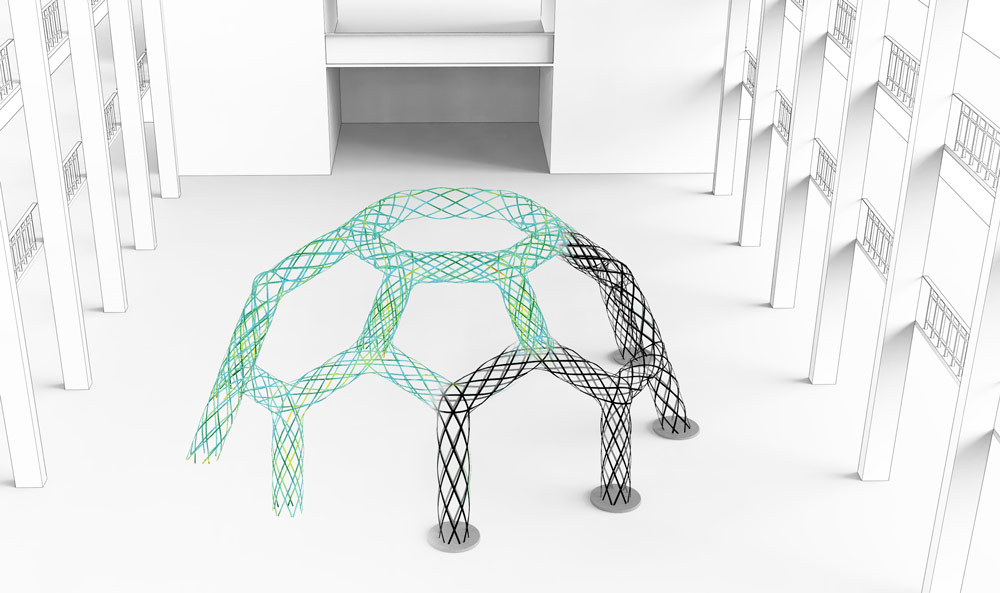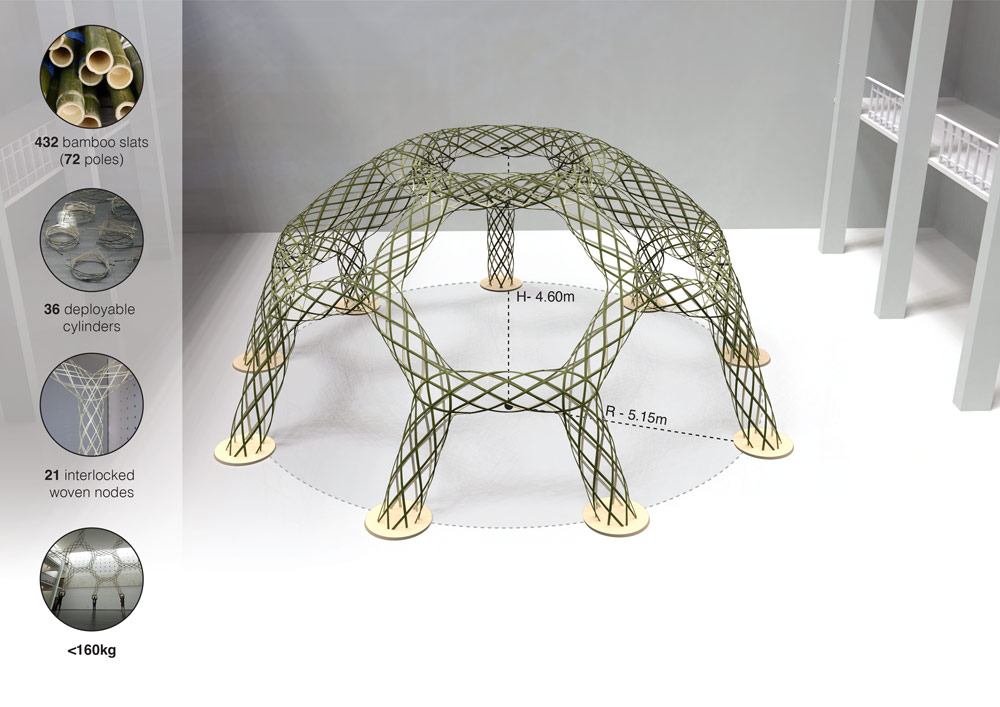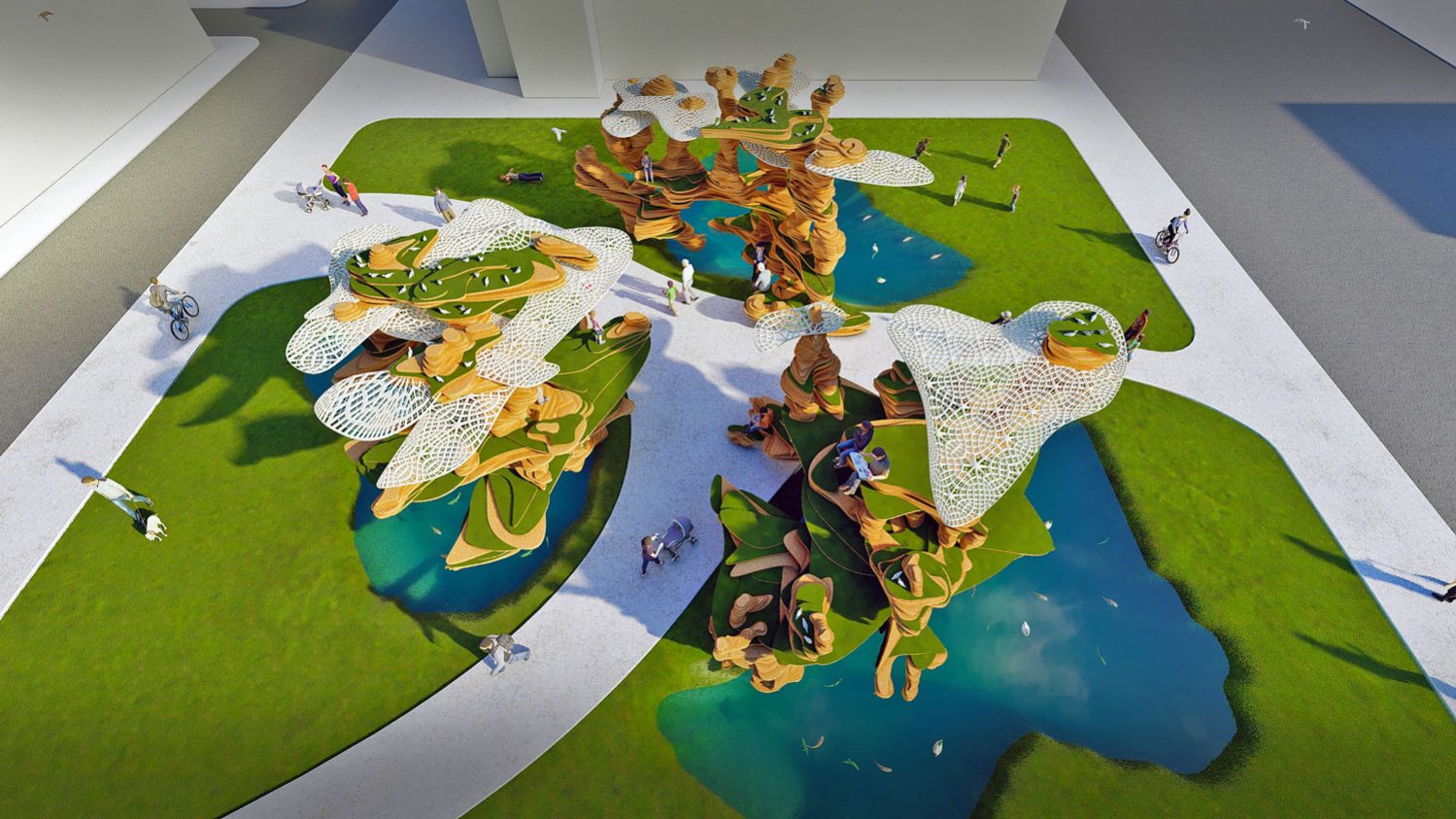The BamX! pavilion was conceived, designed, computationally optimized, fabricated, and assembled in a highly collaborative effort. Coordinated by Dr. Seiichi Suzuki, the project brings together people with expertise in many different areas, including weaving art, design, fabrication, computer science, architecture, and structural engineering.
The Geometric Computing Laboratory of EPFL has developed a new structural system called X-Shells for deployable grid shells. This system utilizes a scissor linkage mechanism that allows an X-Shell to transform from a compact state to a specific 3D shape. The beams within the linkage bend and twist to reach a state of static equilibrium, minimizing internal stresses. This new system allows for the design of intricate freeform surfaces without the need for support or scaffolding, through the use of physics-based simulation and advanced numerical optimization.
While these computational tools were originally designed for homogeneous and isotropic materials, they struggle to model the highly inhomogeneous and anisotropic nature of raw bamboo. To address this challenge, the team has focused on geometry as the universal language of form. They are specifically studying a new class of deployable cylindrical structures that can be connected at woven nodes to form stable, yet lightweight thick shells.
Materialization
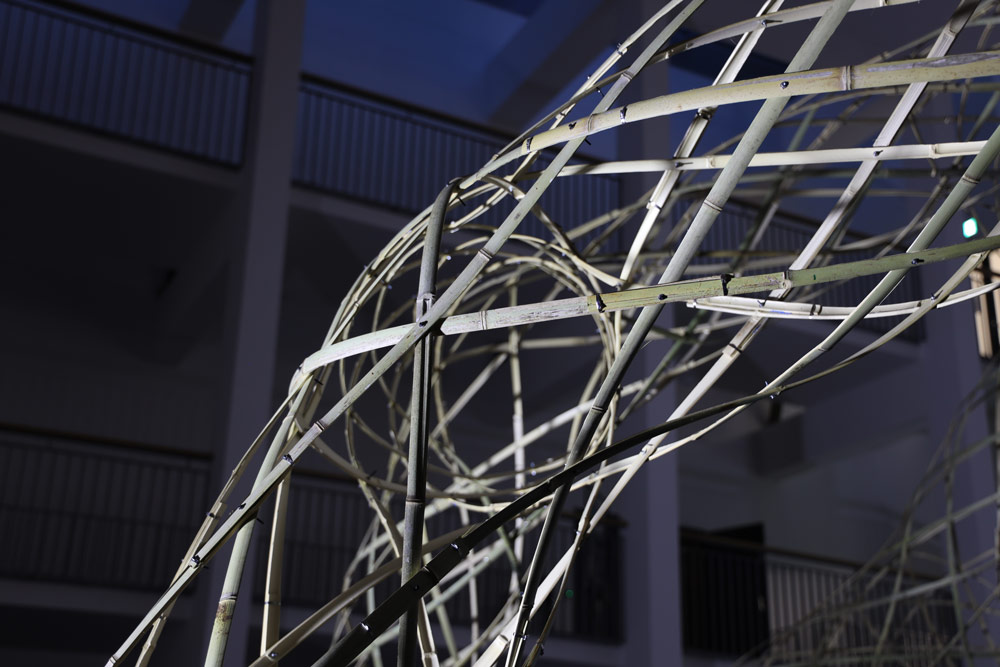
The structure of BamX! relies entirely on the use of raw bamboo and simple hand tools for fabrication. Raw bamboo poles are cut to length with a hand saw, then split using a traditional bamboo splitting device. Joint connections are measured based on the optimized digital model, and holes are drilled manually. Crucially, our proposed structural system is modular, allowing pre-assembly of the deployable cylinders that can be stored and transported compactly.
Geometry
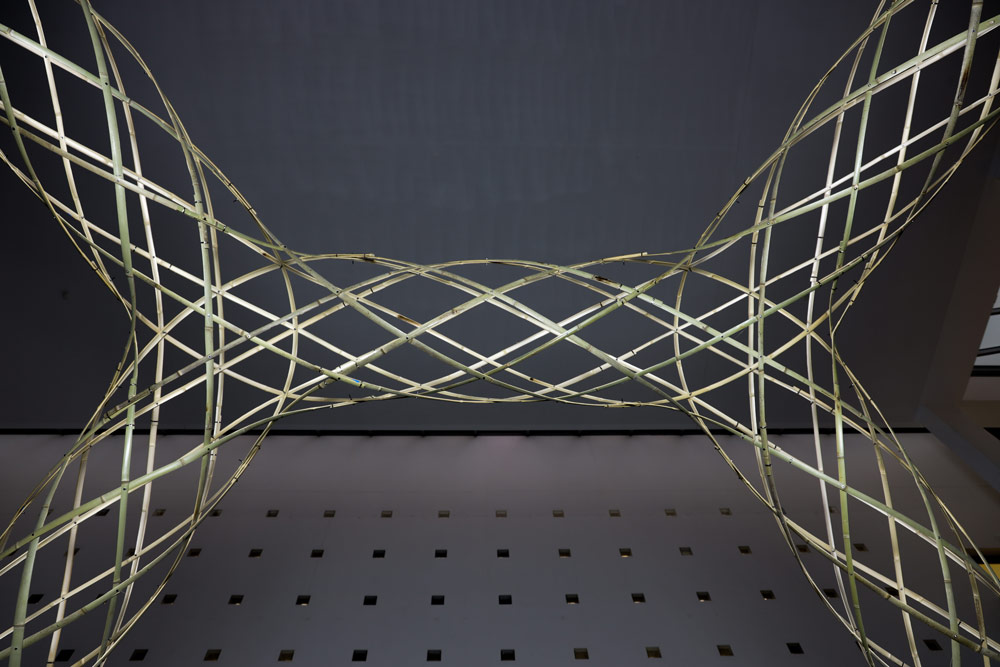
The shape of the BamX! pavilion models part of a truncated icosahedron, a highly symmetric Archimedean solid. The final design is composed of 36 deployable cylinders that are connected at 21 woven nodes to form an arrangement of pentagons and hexagons. The mix of different polygonal elements in the structure locally breaks the symmetry and requires optimizing the nodes carefully to accommodate the different angles at which cylinders join at the node.
Optimization
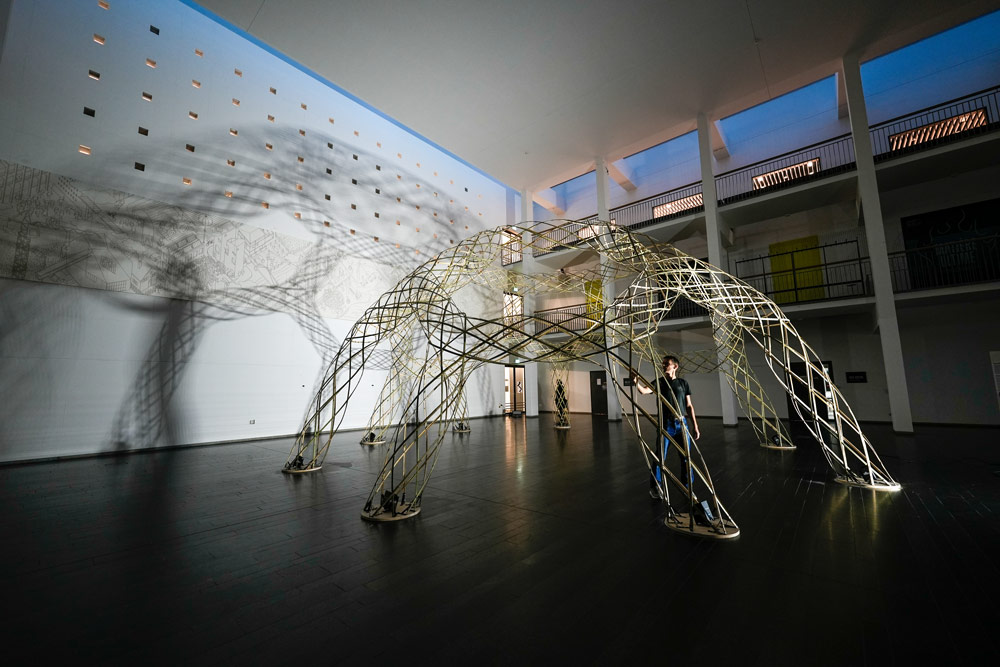
The 36 deployable cylinders meet at woven node connections to form a globally coupled, bending-active system. To find the optimal topology and geometry of the pavilion, we employ advanced numerical optimization techniques that incorporate a physics-based simulation of the bending and twisting behavior of the bamboo ribbons. The goal is to find the optimal ribbon crossing locations such that all external and internal forces are in a global balance, while the mechanical stress experienced by each ribbon is minimized.
Analysis
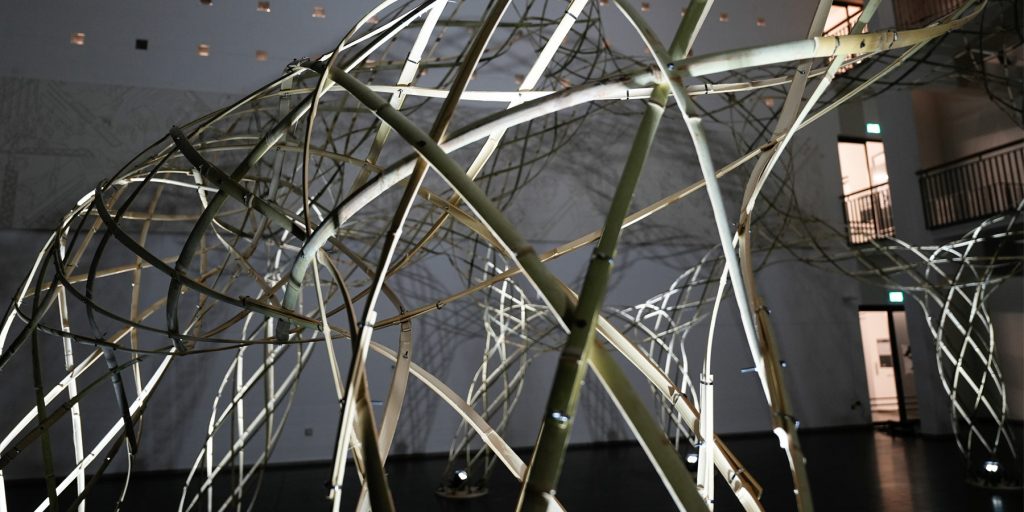
The method of integrating structural information into the design loop includes material evaluation and characterization, structure system characterization, and multi-scale structural analysis. Multi-scale calibration plays an important role in the structural understanding of the project, especially with the use of naturally grown materials and innovative methods of stabilizing global geometry through interlocking patterns. Calibrations are done on the component scale and the ribbon scale.
Physical testing on the cylinder prototype informs the global design with an accumulated stiffness of the components. This data largely simplifies the initial FE analysis into a strut-represented model for rapid iterations on global topology. Once accomplishing the global topology optimization, the characterized mechanical properties from material samples allow for a more sophisticated simulation of the detailed woven geometry.
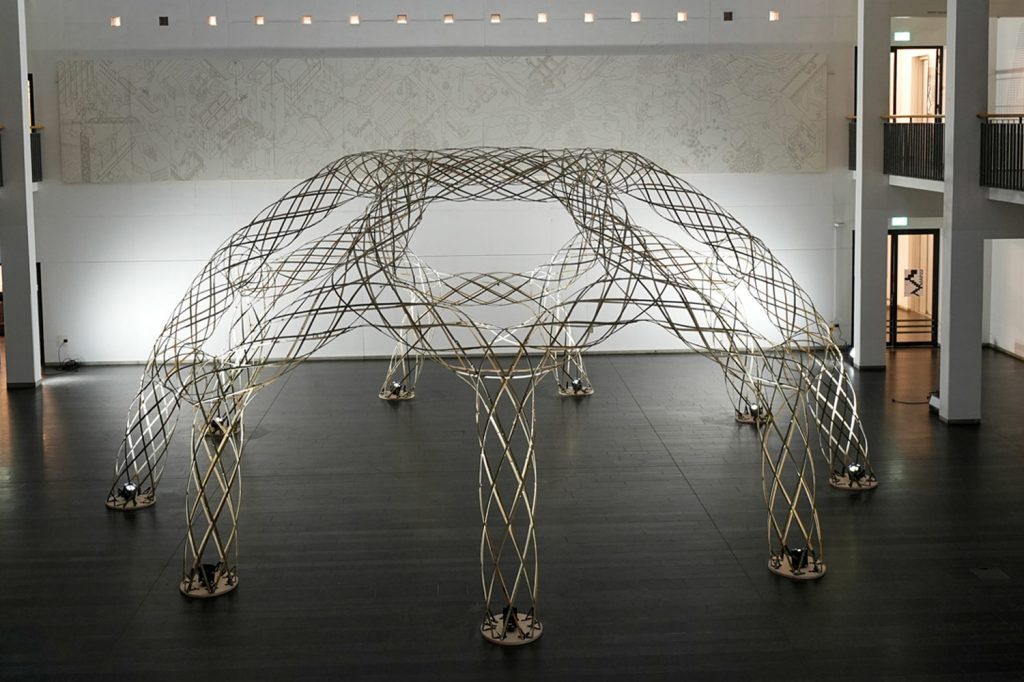
Project Info
Geometric Computing Laboratory, EPFL (Swiss Federal Institute of Technology Lausanne): Filip Goc, Florin Isvoranu, Prof. Dr. Mark Pauly, Dr. Davide Pellis, Samara Ren, Dr. Seiichi Suzuki
Students: Ruben Bento, Antoine Brunner, Guillaume Hueber, Alix Magnaguémabé, Christian Meier, Sepehr Mousavi, Maximilian Paulsen, Xinran Tao, Sixiao Xu
Volunteers: James Pauly, Hannah Pauly
Weaver, Independent Researcher: Alison Martin
ITKE Institute of Building Structures and Structural Design, University of Stuttgart: Tzu-Ying Chen, Yanan Guo, Marta Gil Pérez, Prof. Dr. Jan Knippers
Laboratory for Creative Computation, EPFL: Eric Duong, Maxence Grangeot, Prof. Dr. Stefana Parascho, Ian Ting






